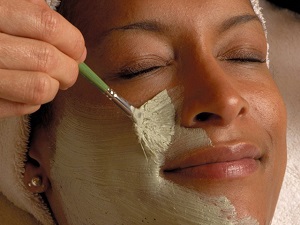Chemical peels are cosmetic procedures used to improve the appearance of the skin by applying a chemical solution to the skin, which causes controlled exfoliation and removal of the outer layers. This process stimulates skin cell turnover, leading to smoother, more even-toned skin and a reduction in various skin concerns. Here are some key points about chemical peels:
Types of Chemical Peels:
There are different types of chemical peels available, categorized based on the depth of penetration and the strength of the chemical solution. The three main types are:
- Superficial or Light Peels: These peels involve the use of mild acids, such as alpha-hydroxy acids (AHAs), to gently exfoliate the outermost layer of the skin. They are typically used to improve skin texture, brighten the complexion, and treat mild skin discoloration or fine lines.
- Medium Peels: These peels use stronger acids, such as trichloroacetic acid (TCA), to penetrate deeper into the skin. They can address more significant skin concerns, such as moderate wrinkles, pigmentation irregularities, and acne scars.
- Deep Peels: Deep peels involve the use of strong acids, such as phenol, to deeply penetrate the skin and provide more dramatic results. They are typically reserved for treating severe wrinkles, deep scars, or extensive sun damage. Deep peels require a longer recovery time and are usually performed under medical supervision.
Benefits of Chemical Peels:
Chemical peels can improve various skin concerns, including:
- Uneven skin tone and texture
- Sun damage and pigmentation irregularities
- Fine lines and wrinkles
- Acne and acne scars
- Age spots and freckles
- Rough or dull skin
Procedure: During a chemical peel procedure:
- The skin is thoroughly cleansed to remove any oils or impurities.
- The chemical solution is carefully applied to the skin using a brush or cotton swab.
- The solution is left on the skin for a specific period, depending on the type of peel and desired results.
- The solution is then neutralized or removed.
- A soothing ointment or moisturizer may be applied to the treated skin.
Recovery and Aftercare:
After a chemical peel, the treated skin may appear red, flaky, and sensitive. It’s essential to follow the aftercare instructions provided by your dermatologist, which may include:
- Avoiding sun exposure and using sunscreen regularly.
- Using gentle cleansers and moisturizers is recommended by your dermatologist.
- Avoiding picking or scratching the treated skin.
- Noticing any signs of infection and promptly reporting them to your dermatologist.
It’s important to consult with a qualified dermatologist or skincare professional to determine if a chemical peel is suitable for your skin type, concerns, and desired results. They can evaluate your skin, discuss the appropriate type of peel, and customize the treatment plan to address your specific needs.
Unlock Your Skin’s Potential
Don’t let skin concerns hold you back from feeling confident and comfortable in your own skin. Our clinic is committed to helping you unlock your skin’s full potential. Our expert dermatologists will assess your specific concerns, whether it’s acne, aging, uneven skin tone, or other issues, and develop a personalized treatment plan tailored to your needs. Experience the transformative power of our skincare solutions and embrace a healthier, more radiant complexion

